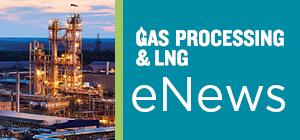Canada’s propane exports to Asia are growing, making up more than 40% of exports in 2024
Canada’s propane exports have steadily increased over the last decade, reaching record highs in 2024 as new marine export terminals streamlined the flow of propane from western Canada to export destinations, particularly to Asia. U.S. propane imports from Canada have stayed relatively consistent since Canada began waterborne exports in 2019.

Propane spot prices in Edmonton, Alberta, are typically at a discount to prices in both East Asia and Conway, Kansas, the propane market hub for the Midwest. Competitive pricing in Canada underpins the demand for Canada’s propane in both East Asia’s and the United States’ propane markets. Most propane exported from Canada to East Asia is consumed as petrochemical feedstock, while propane exported from Canada to the United States is used mostly for space-heating demand, particularly in the Upper-Midwest and Northeast during the winter.
Canada has two marine export terminals on the coast of British Columbia that take propane arriving by rail from Western Canada. Waterborne propane exports out of Canada began in 2019 when Canada’s AltaGas started operating the Ridley Island Propane Export terminal (RIPET) with an initial capacity of 46,000 bpd. The plant’s capacity is now 92,000 bpd. Pembina began operating the Prince Rupert Terminal, which has a shipping capacity of 25,000 bpd of propane, in 2021. These facilities have provided Canada with its first large-scale outlets for direct propane shipments to Asia.
Canada’s waterborne propane exports grew 10% from 2023 to 2024, with almost all going to either Japan or South Korea, according to Vortexa. Since the propane export terminals are located on the Pacific Coast, a vessel can reach East Asia 15 days faster than a vessel leaving the U.S. Gulf Coast.
AltaGas and Dutch company Vopek are planning to build an additional propane export terminal adjacent to RIPET called the Ridley Island Energy Export Facility (REEF). The companies expect to complete the 55,000-b/d-capacity first phase by the end of 2026. The planned capacity addition is expected to lead to more waterborne propane exports to markets in Asia, and, to a lesser extent, the western coast of South America and Mexico.

The growth in Canadian propane exports comes against a backdrop of increasing global demand for propane, driven by petrochemical production, particularly in Asian markets. Until 2018, all of Canada’s propane exports went to the United States. Although the United States is still the largest destination for the country’s propane exports, it accounted for just 58% of exports in 2024 as shipments to Asia have risen sharply.
Most of Canada’s propane exports to the United States have shipped by rail since 2015, with 81% arriving by rail last year. Shipping propane by rail is scalable in the winter months, when propane demand is at its highest in the United States. Propane shipped to the U.S. West Coast by rail typically goes to Ferndale, Washington, where Canadian company AltaGas operates a propane and butane export terminal. Propane is either re-exported to East Asia or distributed for U.S. residential or industrial consumption.
A smaller portion of Canada’s propane exports is transported by pipeline, about 8% in 2024. From 2010 to 2014, before the Cochin Pipeline reversal, pipeline exports from Canada to the United States accounted for about 30% of Canada’s propane exports. Lines 1 and 5 of the Enbridge Mainline carry y-grade, a mix of natural gas liquids, from Alberta across the Great Lakes. Propane is extracted in Superior, Wisconsin, and Rapid River, Michigan, before the pipeline terminates in Sarnia, Ontario.
Canada’s propane exports will likely continue growing as production increases. With additional marine export capacity expected to come online on Canada’s West Coast, most growth will be to the Pacific Basin, especially East Asia.
Related News
Related News

- ExxonMobil halts 1-Bft3d blue hydrogen project in Texas
- Aramco and Yokogawa commission multiple autonomous control AI agents at Fadhili gas plant
- Ukraine will resume gas imports via Transbalkan route in November
- Mitsubishi to inject $260 MM into Brunei LNG project
- Freeport LNG (U.S.) on track to take in more natgas on Thursday after unit outage



Comments